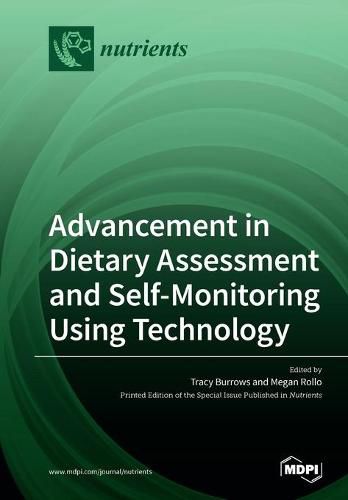Readings Newsletter
Become a Readings Member to make your shopping experience even easier.
Sign in or sign up for free!
You’re not far away from qualifying for FREE standard shipping within Australia
You’ve qualified for FREE standard shipping within Australia
The cart is loading…






This title is printed to order. This book may have been self-published. If so, we cannot guarantee the quality of the content. In the main most books will have gone through the editing process however some may not. We therefore suggest that you be aware of this before ordering this book. If in doubt check either the author or publisher’s details as we are unable to accept any returns unless they are faulty. Please contact us if you have any questions.
Although methods to assess or self-monitor intake may be considered similar, the intended function of each is quite distinct. For the assessment of dietary intake, methods aim to measure food and nutrient intake and/or to derive dietary patterns for determining diet-disease relationships, population surveillance or the effectiveness of interventions. In comparison, dietary self-monitoring primarily aims to create awareness of and reinforce individual eating behaviours, in addition to tracking foods consumed. Advancements in the capabilities of technologies, such as smartphones and wearable devices, have enhanced the collection, analysis and interpretation of dietary intake data in both contexts. This Special Issue invites submissions on the use of novel technology-based approaches for the assessment of food and/or nutrient intake and for self-monitoring eating behaviours. Submissions may document any part of the development and evaluation of the technology-based approaches. Examples may include:
web adaption of existing dietary assessment or self-monitoring tools (e.g., food frequency questionnaires, screeners) image-based or image-assisted methods mobile/smartphone applications for capturing intake for assessment or self-monitoring wearable cameras to record dietary intake or eating behaviours body sensors to measure eating behaviours and/or dietary intake use of technology-based methods to complement aspects of traditional dietary assessment or self-monitoring, such as portion size estimation.
$9.00 standard shipping within Australia
FREE standard shipping within Australia for orders over $100.00
Express & International shipping calculated at checkout
This title is printed to order. This book may have been self-published. If so, we cannot guarantee the quality of the content. In the main most books will have gone through the editing process however some may not. We therefore suggest that you be aware of this before ordering this book. If in doubt check either the author or publisher’s details as we are unable to accept any returns unless they are faulty. Please contact us if you have any questions.
Although methods to assess or self-monitor intake may be considered similar, the intended function of each is quite distinct. For the assessment of dietary intake, methods aim to measure food and nutrient intake and/or to derive dietary patterns for determining diet-disease relationships, population surveillance or the effectiveness of interventions. In comparison, dietary self-monitoring primarily aims to create awareness of and reinforce individual eating behaviours, in addition to tracking foods consumed. Advancements in the capabilities of technologies, such as smartphones and wearable devices, have enhanced the collection, analysis and interpretation of dietary intake data in both contexts. This Special Issue invites submissions on the use of novel technology-based approaches for the assessment of food and/or nutrient intake and for self-monitoring eating behaviours. Submissions may document any part of the development and evaluation of the technology-based approaches. Examples may include:
web adaption of existing dietary assessment or self-monitoring tools (e.g., food frequency questionnaires, screeners) image-based or image-assisted methods mobile/smartphone applications for capturing intake for assessment or self-monitoring wearable cameras to record dietary intake or eating behaviours body sensors to measure eating behaviours and/or dietary intake use of technology-based methods to complement aspects of traditional dietary assessment or self-monitoring, such as portion size estimation.